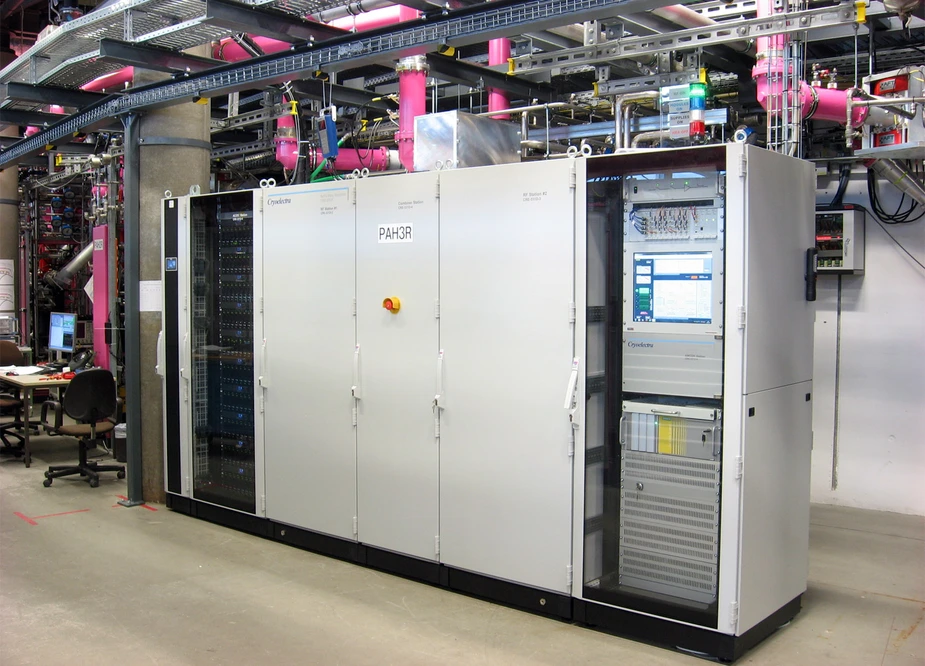BESSY II changes over to solid state RF amplifiers
Advantages: improved beam quality and need-based energy consumption
BESSY II storage ring has four cavity resonators that are excited with high-power oscillating electromagnetic fields to compensate for the energy lost by the electron beam. Four Klystrons, as they are called (large high-power linear RF vacuum tubes), have provided extremely pure 500-MHz RF power for exciting these cavity resonators up to now. But there are no replacement klystrons available on the market. Wolfgang Anders and his team at the HZB’s Institute SRF – Science and Technology have therefore used the shutdown to replace two of the klystrons with modern solid-state RF amplifiers. The other klystrons are to be replaced until the end of the year.
“This technology was first developed and employed at the SOLEIL synchrotron in France. However, SOLEIL operates with an excitation frequency of 350 MHz. By comparison, we work with a frequency of 500 MHz like most synchrotron light sources. We had to develop a new design for that reason. The development and manufacture of the RF amplifiers was carried out by a German company named Cryoelectra. We're the first photon source with this technology to have reached an excitation power of 75 kilowatts per amplifier for 500 MHz”, explains Anders.
While the vacuum-tube klystrons required a supply voltage of 26 kilovolts, the solid-state semiconductor RF amplifiers operate at just 50 Volts, but require much higher current. The energy saved is a big advantage. This is because klystron vacuum-tube RF amplifiers constantly draw full power from the mains, whereas the semiconductor RF amplifiers’ current draw is demand-follow and they only pull as much power from their mains connection as needed to compensate for the electron beam energy losses. In addition, the new RF units produce much less RF-noise, because the cavity resonators are excited more purely, which in turn improves the beam quality.
“My team has been working on implementing the new technology at BESSY II for three years. Just the extensive programming for connecting up to the control system interface and performing the signal processing for the solid-state amplifiers took a year for the engineer we hired specially for this. Now we have a very robust solution that is probably of interest to other synchrotron light sources as well”, says Anders.
More information:
Dr. Wolfgang Anders
Institute SRF - Science and Technology
Tel.: (030) 8062-12929 or -14617
Email: wolfgang.anders(at)helmholtz-berlin.de
